Papers by Muhammad Imran Ghani
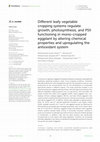
Frontiers in Plant Science
Continuous cropping of eggplant threatened regional ecological sustainability by facilitating rep... more Continuous cropping of eggplant threatened regional ecological sustainability by facilitating replanting problems under mono-cropping conditions. Therefore, alternative agronomic and management practices are required to improve crop productivity at low environmental cost for the development of sustainable agricultural systems in different regions. This study examined changes in soil chemical properties, eggplant photosynthesis, and antioxidant functioning in five different vegetable cropping systems over a 2-year period., 2017 and 2018. The results showed that welsh onion-eggplant (WOE), celery-eggplant (CE), non-heading Chinese cabbage-eggplant (NCCE), and leafy lettuce-eggplant (LLE) rotation systems significantly impacted growth, biomass accumulation, and yield than fallow-eggplant (FE). In addition, various leafy vegetable cropping systems, WOE, CE, NCCE, and LLT induced significant increases in soil organic matter (SOM), available nutrients (N, P, and K), and eggplant growth by...
Horticultural Plant Journal
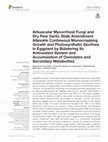
Frontiers in Plant Science
Vegetable production under plastic sheds severely threatens regional eco-sustainability via anthr... more Vegetable production under plastic sheds severely threatens regional eco-sustainability via anthropogenic activities (excessive use of agrochemicals, pesticides) and problems associated with replanting. Long-term successive cropping across growing seasons induces continuous cropping stress, whose effects manifest as diminished plant growth. Therefore, it is imperative that we develop environmentally sustainable approaches, such as replacing agrochemicals with vegetable waste like dry raw garlic stalk (DRGS) or use biofertilizers like arbuscular mycorrhizal fungi (AMF) (e.g., Diversispora epigaea). In this study, the influence of AMF on the growth, biochemical attributes, antioxidant defense system, phytohormones, accumulation of osmolytes, phenols, and mineral elements in eggplant grown on DRGS-amended soils under continuous monocropping (CMC) was studied. The results showed that inoculation with AMF or the DRGS amendment could improve the pigments’ content, photosynthesis, and anti...

Plant and Soil
Method Four different leafy vegetables, including Welsh Onion (WO), Celery (CL), No Heading Chine... more Method Four different leafy vegetables, including Welsh Onion (WO), Celery (CL), No Heading Chinese Cabbage (NCC), Lettuce (LT), and fallow eggplant (FE), were introduced during the eggplant fallow period (November-March) in two consecutive years, i.e., 2017 and 2018 following eggplant. We assessed eggplant production, soil chemical properties and described the soil microbial community under the introduced rotation system. Results The results revealed that CR with winter leafy vegetables modified the soil environment by improving soil organic carbon (SOC), soil chemical, and biochemical characteristics in both years. Sequencing results showed significant variations in fungal and bacterial community structures at the genus and phylum levels in response to CR. CR reduced some disease-causing pathogens at the fungal genus levels, including Fusarium and Ascomycota, in both years and increased the abundance of some beneficial taxa such as Mortierella and Bacillus. Conclusion These findings revealed the significance of crop rotation systems for sustainable production of eggplant under the plastic tunnel by enhancing soil physicochemical properties and soil beneficial microbes and reducing certain disease-causing soilborne pathogens.
International Journal of Molecular Sciences, Aug 21, 2020

Agriculture, Ecosystems & Environment, 2021
Abstract Crop rotation is an ecologically crucial phenomenon for the sustainable development of p... more Abstract Crop rotation is an ecologically crucial phenomenon for the sustainable development of plastic shed production systems, possibly affecting soil properties and microbiome structure. However, little is known about how soil microbial shifts in cropping system capacity could play a key role in agroecosystem functions under different soil environmental conditions. Here, we examined the high-throughput sequencing of soil microbial community structures and characterized key microbes or ecological functions under environmental changes after seven years of plastic shed cucumber planted soil. The results showed that coriander-cucumber (CC), non-heading Chinese cabbage-cucumber (NCCC), and spinach-cucumber (SC) rotation systems significantly impacted the succession of microbial community structure than fallow-cucumber (FC). In particular, NCCC rotation altered the beneficial soil microbial shift by promoting more antagonistic microbial abundance than leafy lettuce-cucumber (LLC) rotations or FC cropping. Both NCCC and CC rotations have affected mainly the pathways of energy metabolism and carbohydrate metabolism. Soil available nitrogen (N) and soil organic matter were the key factors in the succession of bacterial metabolic functions. Cyanobacteria, Firmicutes, Actinobacteria, and mycorrhizal taxa were significantly contributed to soil N-cycles (nitrification, nitrate reduction, and N-fixation). Acidobacteria and Ascomycota are potential candidates for hydrocarbon and aromatic compound degradations. The pH-dependent Bacteroidetes in NCCC1 group increased the function of metalloid metabolism and suggested as an indicator of arsenic (As)-rhizoremediation. The functional shift in the soil fungal community under NCCC2 and CC1 groups was primarily related to symbiotrophs, while available potassium and available phosphorus served as significant predictors of fungal functional guilds. The findings indicated that certain cropping systems are crucial for the sustainable development of plastic shed cucumber production by improving the potential capabilities of soil microbial communities to reduce the environmental risk of soil contaminants.
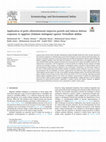
Ecotoxicology and Environmental Safety, 2021
Aqueous garlic extracts (AGE) and garlic allelochemical diallyl disulfide (DADS) have been recent... more Aqueous garlic extracts (AGE) and garlic allelochemical diallyl disulfide (DADS) have been recently reported to bear bioactive properties to stimulate plant growth and development and alter defense-related physiology. We, therefore, performed a bioassay to study these chemicals as possible biostimulants for defense against Verticillium dahliae in eggplant seedlings. AGE and DADS were applied as a foliar application to the eggplants and samples were collected before and after pathogen inoculation at various intervals to analyze the defense mechanism. The obtained data revealed that with the application of AGE and DADS, the seedlings showed responses including activation of antioxidant enzymes, an abundance of chlorophyll contents, alteration of photosynthesis system, and accumulation of plant hormones compared to the control plants. Furthermore, the microscopic analysis of the AGE or DADS treated plants showed high variability in pathogen density within the root crown at 28 days post-inoculation. The low abundance of reactive oxygen species was noticed in AGE or DADS treated plants, which indicates that the plants were able to successfully encounter pathogen attacks. The AGE and DADS treated plants exhibited a lower disease severity index (32.4% and 24.8% vs 87.1% in controls), indicating successful defense against Verticillium infection. Our results were therefore among the first to address the biostimulatory effects of AGE or DADS to induce resistance in eggplant seedlings against V. dahliae and may be used to establish preparation for garlic-derived bioactive compounds to improve growth and defense responses of eggplants under-protected horticultural situations such as glasshouse or plastic tunnels system.
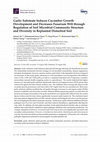
International Journal of Molecular Sciences, 2020
Garlic substrate could influence plant growth through affecting soil microbiome structure. The re... more Garlic substrate could influence plant growth through affecting soil microbiome structure. The relationship mechanism between changes in soil microbial communities, disease suppression and plant development, however, remains unclear, particularly in the degraded soil micro-ecological environment. In this study, garlic substrates as a soil amendment were incorporated with different ratios (1:100, 3:100 and 5:100 g/100 g of soil) in a replanted disturbed soil of long-term cucumber monoculture (annual double cropping system in a greenhouse). The results indicated that higher amount of C-amended garlic substrate significantly induced soil suppressiveness (35.9% greater than control (CK) against the foliar disease incidence rate. This inhibitory effect consequently improved the cucumber growth performance and fruit yield to 20% higher than the non-amended soil. Short-term garlic substrate addition modified the soil quality through an increase in soil organic matter (SOM), nutrient availa...
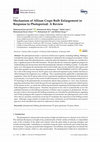
International Journal of Molecular Sciences, 2020
The photoperiod marks a varied set of behaviors in plants, including bulbing. Bulbing is controll... more The photoperiod marks a varied set of behaviors in plants, including bulbing. Bulbing is controlled by inner signals, which can be stimulated or subdued by the ecological environment. It had been broadly stated that phytohormones control the plant development, and they are considered to play a significant part in the bulb formation. The past decade has witnessed significant progress in understanding and advancement about the photoperiodic initiation of bulbing in plants. A noticeable query is to what degree the mechanisms discovered in bulb crops are also shared by other species and what other qualities are also dependent on photoperiod. The FLOWERING LOCUS T (FT) protein has a role in flowering; however, the FT genes were afterward reported to play further functions in other biological developments (e.g., bulbing). This is predominantly applicable in photoperiodic regulation, where the FT genes seem to have experienced significant development at the practical level and play a novel...
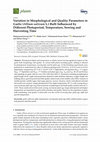
Plants, 2020
Photoperiod (light) and temperature as abiotic factors having significant impact on the garlic bu... more Photoperiod (light) and temperature as abiotic factors having significant impact on the garlic bulb morphology and quality. In various bulb plants including garlic, bulbing is affected by photoperiod, temperature, sowing date and the plant age. In this backdrop experiments were performed to understand the effect of different photoperiods (10 h/14 h, 12 h/12 h and 14 h/10 h (light/dark)), temperatures (25 °C/18 °C and 30 °C/20 °C (light/dark)), sowing dates (D0801: 1st August, D0901: 1st September and D1001: 1st October) and plant ages (A80, A60 and A40: 80, 60 and 40 days after planting) on garlic cultivars viz; G103, G024 and G2011-5. Parameters including morphological (plant height, fresh weight and pseudostem diameter), bulb attributes (diameter, weight, height and bulbing index), growth period and bulb quality related traits (total soluble solid (TSS), contents of soluble protein, soluble sugar, total sugar, glucose, sucrose, fructose, starch, total phenol and total flavonoid) w...
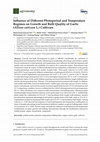
Agronomy, 2019
Growth and bulb development in garlic is affected considerably by variations in photoperiod and t... more Growth and bulb development in garlic is affected considerably by variations in photoperiod and temperature thereby influencing its morphology, physiology, and nutritive quality. Varied combinations of photoperiods and temperatures may influence the bulb development and quality, and can determine the suitability of a cultivar for a particular region. Experiments were conducted to study the impact of different photoperiod and temperature combinations on the growth, morpho-physiology, and nutritive quality of garlic bulb. Three garlic cultivars viz; G103, G024, and G2011-5 were exposed to different combinations of photoperiod (8 h/16 h, 10 h/14 h, 12 h/12 h, 14 h/10 h, 16 h/8 h (light/dark)) and temperature (20 °C/15 °C, 25 °C/18 °C, and 30 °C/20 °C). Results revealed that longer photoperiod (14 h or 16 h) and higher temperature (25 °C or 30 °C) treatments significantly improved the garlic bulbing imparting maximum bulb diameter, height, bulbing index, and the shortest growth period. ...
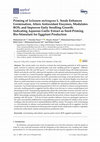
Applied Sciences, 2019
The current study was aimed to evaluate the seed priming potential of AGE (aqueous garlic extract... more The current study was aimed to evaluate the seed priming potential of AGE (aqueous garlic extracts) to enhance seed germination and early seedling growth of eggplant. Different concentrations (100, 200, and 300 µg mL−1) of AGE were evaluated along with methyl jasmonate (MeJA) and salicylic acid (SA), plant growth regulators with reported seed priming potential whereas, water was taken as a control treatment. Eggplant seeds were primed for 4-, 8-, and 12-h and seed germination traits such germination rate index, germination percentage, mean germination time, and early seedling growth traits such as fresh and dry weights, root, and shoot lengths were observed. Moreover, plant antioxidant enzymes activities and lipid peroxidation levels, soluble protein contents and reactive oxygen species were monitored to establish the stimulatory/inhibitory effects of the treatments. Our results indicate priming potential of AGE, SA, and MeJA to enhance seed germination and early seedling growth in ...
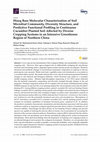
International Journal of Molecular Sciences, 2019
Cover crops are key determinants of the ecological stability and sustainability of continuous cro... more Cover crops are key determinants of the ecological stability and sustainability of continuous cropping soils. However, their agro-ecological role in differentially reshaping the microbiome structure and functioning under a degraded agroecosystem remains poorly investigated. Therefore, structural and metabolic changes in soil bacterial community composition in response to diverse plant species were assessed. Winter catch leafy vegetables crops were introduced as cover plants in a cucumber-fallow period. The results indicate that cover crop diversification promoted beneficial changes in soil chemical and biological attributes, which increased crop yields in a cucumber double-cropping system. Illumina high-throughput sequencing of 16S rRNA genes indicated that the bacterial community composition and diversity changed through changes in the soil properties. Principal component analysis (PCA) coupled with non-metric multidimensional scaling (NMDS) analysis reveals that the cover planting...

International Journal of Molecular Sciences, 2019
The incorporation of plant residues into soil can be considered a keystone sustainability factor ... more The incorporation of plant residues into soil can be considered a keystone sustainability factor in improving soil structure function. However, the effects of plant residue addition on the soil microbial communities involved in biochemical cycles and abiotic stress phenomena are poorly understood. In this study, experiments were conducted to evaluate the role of raw garlic stalk (RGS) amendment in avoiding monoculture-related production constraints by studying the changes in soil chemical properties and microbial community structures. RGS was applied in four different doses, namely the control (RGS0), 1% (RGS1), 3% (RGS2), and 5% (RGS3) per 100 g of soil. The RGS amendment significantly increased soil electrical conductivity (EC), N, P, K, and enzyme activity. The soil pH significantly decreased with RGS application. High-throughput Illumina MiSeq sequencing revealed significant alterations in bacterial community structures in response to RGS application. Among the 23 major taxa det...
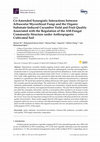
International Journal of Molecular Sciences, 2019
Monotonous cucumber double-cropping systems under plastic greenhouse vegetable cultivation (PGVC)... more Monotonous cucumber double-cropping systems under plastic greenhouse vegetable cultivation (PGVC) previously intensified by long-term anthropogenic activities and manipulative treatments leads to a crop productivity reduction and soil biota disturbances. In this study, the role of the indigenous arbuscular mycorrhizal strain (AM: Glomus versiforme L.) and organic substrate (GS: Garlic stalk) application were assessed for plant microbe interaction and crop productivity feedback in a greenhouse (2016–2018) under a cultivated Anthrosol characterized as a replanted degraded soil. We found that repetitively adding AM inocula with organic substrates (GS) improved the cucumber growth and physiology. The useful trait of AM symbiosis with C-amended organic substrates preferentially manifested as increased root colonization, hyphal density proliferation, AM sporulation, root activity, and suppressed Fusarium incidence. The post AM development further prevailed the synergistic interaction, and...
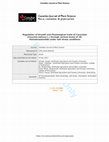
Canadian Journal of Plant Science, 2017
Brassinoids are plant steroidal hormones which are ubiquitous in plant kingdom and regulate a wid... more Brassinoids are plant steroidal hormones which are ubiquitous in plant kingdom and regulate a wide range of physiological and stress responses. In a plastic tunnel, pot bioassay experiment, three levels of homobrassinolide (HBL) at 1, 3 and 5µM were tested on growth and physiological attributes of cucumber cultivars Jinyou 1 # (salt sensitive) and Changchun Mici (salt tolerant), grown at various salt stress conditions (60 and 120 mM). Cucumber plants of both cultivars subjected to salt stress exhibited reduced growth attributes and altered antioxidant enzymes at 60 and 120 mM. However, the deleterious effects of salt stress were partially improved by HBL. The foliar application of HBL enhanced shoot and root fresh and dry weight, chlorophyll content at 60 mM and 120 mM NaCl stress in cv Jinyou 1 # and cv Changchun Mici, respectively. HBL application also altered the antioxidant enzyme levels by increasing Super oxide dismutase (SOD), Peroxidase (POD) levels and decreased the Malondialdehyde content (MDA) under 60 and 120 mM stressed plants in both cultivars. Overall results showed that HBL could enhance growth attributes, chlorophyll content and antioxidant enzymes for both of the cultivars under mild and high NaCl stress.

Ceramics International, 2013
Abstract In this work, instead of chemical pure zirconia, natural baddeleyite was used as startin... more Abstract In this work, instead of chemical pure zirconia, natural baddeleyite was used as starting material to prepare partially stabilized zirconia (PSZ) with magnesia as stabilizer. Response surface methodology (RSM) involving central composite design (CCD) was employed to optimize the sintering process for the preparation of magnesia partially stabilized zirconia (MgO-PSZ) with the aim of improving the relative density and bending strength of the materials. The interaction between three variables i.e. sintering temperature, holding time and heating rate was studied and modeled. The statistical analysis of the results showed that in the range studied, sintering temperature had a significant effect on relative density and bending strength. The optimum combination predicted by RSM was experimentally confirmed, whereby almost complete densification with the relative density 99.44% was obtained at a 3 °C/min cooling rate.
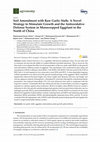
Agronomy, 2019
Garlic (Allium Sativum L.) is a vegetable with known medicinal value. It is not only rich in nutr... more Garlic (Allium Sativum L.) is a vegetable with known medicinal value. It is not only rich in nutrients, but also has the ability to combat different microbial infections. This is, however, the first study to investigate the effect of soil incorporation of the raw garlic stalk (RGS) on the growth and antioxidative defense system of eggplant. The experiments were conducted in pots using soil amendments of RGS in different ratios (RGS1 1:100; RGS2 3:100; RGS3 5:100 and control (CK) 0:100 of RGS: Soil w/w) and repeated in two consecutive years (2016 and 2017). A dose-dependent response of RGS amendment was observed in the growth and physiology of the eggplant. RGS1 and RGS2 significantly enhanced the plant height, root/shoot weight, stem diameter, leaf area, root length, root activity, pigment contents (chlorophyll a, chlorophyll b, and total chlorophyll), and photosynthetic parameters, but reduced intracellular CO2 (Ci) and enhanced fruit yield as compared with the respective controls....
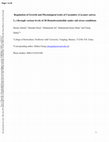
Brassinoids are plant steroidal hormones which are ubiquitous in plant kingdom and regulate a wid... more Brassinoids are plant steroidal hormones which are ubiquitous in plant kingdom and regulate a wide range of physiological and stress responses. In a plastic tunnel, pot bioassay experiment, three levels of homobrassinolide (HBL) at 1, 3 and 5µM were tested on growth and physiological attributes of cucumber cultivars Jinyou 1 # (salt sensitive) and Changchun Mici (salt tolerant), grown at various salt stress conditions (60 and 120 mM). Cucumber plants of both cultivars subjected to salt stress exhibited reduced growth attributes and altered antioxidant enzymes at 60 and 120 mM. However, the deleterious effects of salt stress were partially improved by HBL. The foliar application of HBL enhanced shoot and root fresh and dry weight, chlorophyll content at 60 mM and 120 mM NaCl stress in cv Jinyou 1 # and cv Changchun Mici, respectively. HBL application also altered the antioxidant enzyme levels by increasing Super oxide dismutase (SOD), Peroxidase (POD) levels and decreased the Malondialdehyde content (MDA) under 60 and 120 mM stressed plants in both cultivars. Overall results showed that HBL could enhance growth attributes, chlorophyll content and antioxidant enzymes for both of the cultivars under mild and high NaCl stress.










Uploads
Papers by Muhammad Imran Ghani